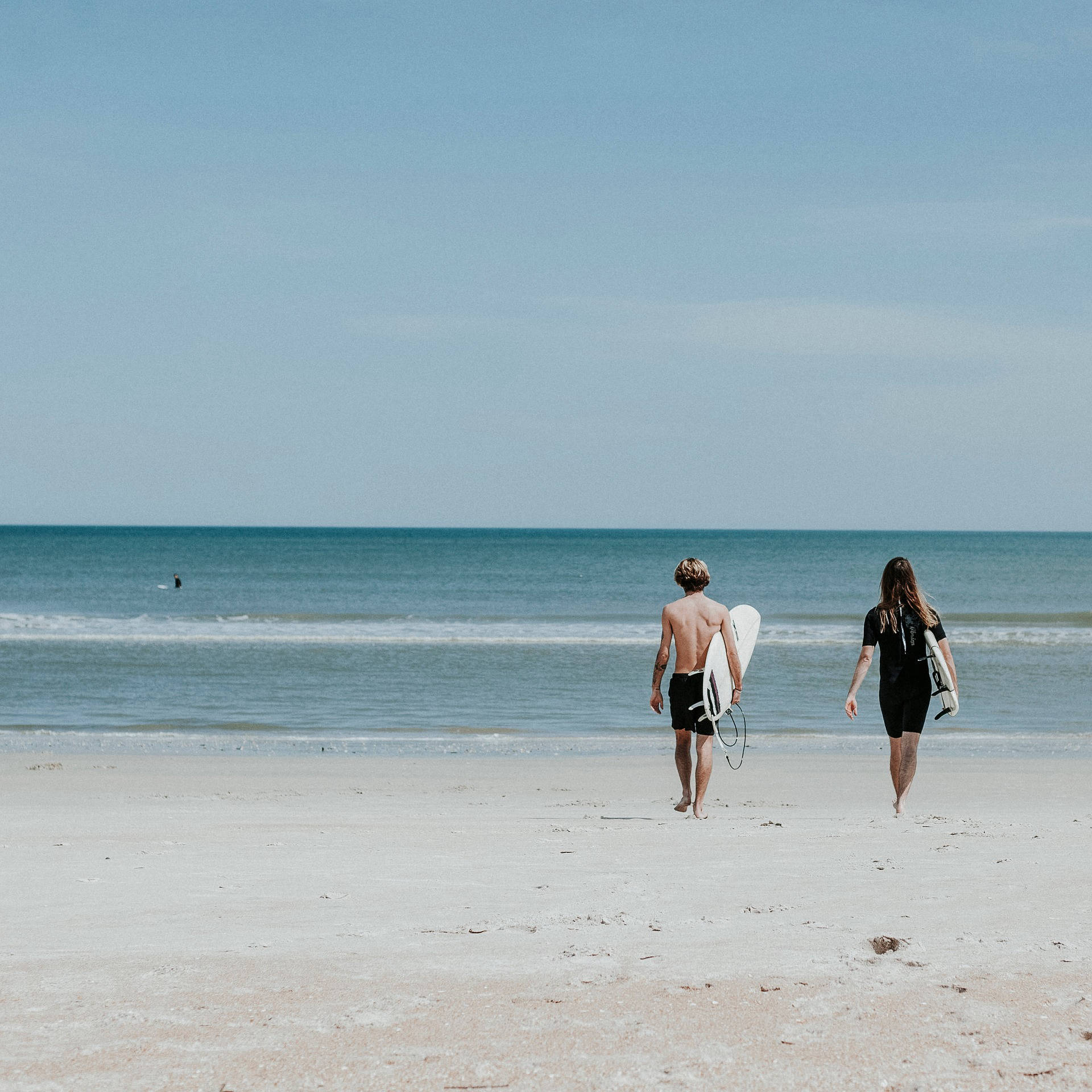
神奈川のサーフィンスポット50選

神奈川のサーフィンスポットを一挙ご紹介。
湘南ならではのサーフカルチャーの根付いた独特の空気。湘南、西湘のビーチエリアから鎌倉リーフクラシックポイントまで年中楽しめる波乗り環境が魅力。これらエリアは日本有数のクオリティの高い美しいブレイクを見せる。
神奈川の波乗りの特徴として、台風などのグランドスウェルで真価を発揮する逗子周辺のリーフクラシカルエリアと、スモールサイズが多いながらもコンスタントにブレイクする藤沢、茅ヶ崎方面のポイントと西湘方面のポイントに分類される。湘南エリアは房総半島、三浦半島、伊豆半島に挟まれた地形のおかげで外洋からの強いうねりがシェイプされて届く特徴がある。これは裏を返せば荒れた強いうねりもまとまって入るためGoodウェーブとなる確率が高まる。ただし、波の収まるスピードも速いため、潮回りやうねりの向きを十分に考慮した上で、サーフプランを立てたい。水温は比較的高いため、真冬のサーフもおすすめ。サーファーも少なく西高東低の西風で波乗りできる場合もある。
収録サーフポイント
三浦海岸 / みうらかいがん [逗子・葉山・秋谷] 秋谷海岸 / あきやかいがん [逗子・葉山・秋谷] 長者ヶ崎 / ちょうじゃがさき [逗子・葉山・秋谷] 立石 / たていし [逗子・葉山・秋谷] 一色海岸 / いっしきかいがん [逗子・葉山・秋谷] 逗子海岸 / ずしかいがん [逗子・葉山・秋谷] 大崎 / おおさき [逗子・葉山・秋谷] カブネ [逗子・葉山・秋谷] 鎌倉エリア サーフスポット 玉石 / たまいし [鎌倉エリア] 由比ヶ浜 / ゆいがはま [鎌倉エリア] への字 [鎌倉エリア] 材木座 / ざいもくざ [鎌倉エリア] 稲村ガ崎 / いなむらがさき [鎌倉エリア] 七里ヶ浜 / しちりがはま [鎌倉エリア] 峰ヶ原 / みねがはら [鎌倉エリア] 恵風園前 / けいふうえんまえ [鎌倉エリア] 腰越漁港 / こしごえぎょこう [鎌倉エリア] 鎌高前 / かまこうまえ [鎌倉エリア] 一本松 / いっぽんまつ [鎌倉エリア] 藤沢・茅ヶ崎エリア 湘南港 / しょうなんこう [藤沢・茅ヶ崎エリア] 新水族館前 / すいぞくかんまえ [藤沢・茅ヶ崎エリア] 鵠沼銅像前 / どうぞうまえ [藤沢・茅ヶ崎エリア] 大六 / だいろく [藤沢・茅ヶ崎エリア] マクドナルド前 [藤沢・茅ヶ崎エリア] 引地川河口 / ひきちがわかこう [藤沢・茅ヶ崎エリア] スケートパーク前 [藤沢・茅ヶ崎エリア] 松波地下道前 / ちかどうまえ [藤沢・茅ヶ崎エリア] 船前 / ふねまえ [藤沢・茅ヶ崎エリア] 翔洋中前 / しょうようちゅうまえ[藤沢・茅ヶ崎エリア] 辻堂正面 / つじどうしょうめん [藤沢・茅ヶ崎エリア] 汐小前 / しおしょうまえ [藤沢・茅ヶ崎エリア] チーパー [藤沢・茅ヶ崎エリア] 第2駐車場前 [藤沢・茅ヶ崎エリア] チサン [藤沢・茅ヶ崎エリア] パーク [藤沢・茅ヶ崎エリア] Tバー [藤沢・茅ヶ崎エリア] 柳島/ やなぎしま [藤沢・茅ヶ崎エリア] 西浜 / にしはま [藤沢・茅ヶ崎エリア] 白樺 / しらかば [藤沢・茅ヶ崎エリア] 茅ヶ崎漁港 / ちがさきぎょこう [藤沢・茅ヶ崎エリア] 馬入 / ばにゅう [藤沢・茅ヶ崎エリア] 西湘エリア サーフスポット 相模川河口 / さがみがわかこう [西湘エリア] 花水川河口 / はなみずがわかこう [西湘エリア] 虹ヶ浜 / にじがはま [西湘エリア] 平塚 / ひらつか [西湘エリア] 高浜台 / たかはまだい [西湘エリア] 唐ヶ原 / とうがはら [西湘エリア] 磯高前 / いそこうまえ [西湘エリア] 源二 / げんじ [西湘エリア] 大磯メイン [西湘エリア] 吉浜 [西湘エリア]
神奈川サーフスポット
千葉や湘南方面が全面クローズした時に程よいサイズで楽しめるポイント。
台風接近時にローカルが集うとビジターが波を取れるチャンスは少ない。
強烈な南ウネリが必要。北東風がベター。
普段は波がないが、強いうねりが入った場合ライトへ割れる波は極上。
リーフブレイクによるインサイドよりのホローな波が特徴。
台風などで鎌倉方面がクローズ気味となった際にブレイクしはじめる。
逗子マリーナ東側堤防のBIGウェーブポイント。ほれあがるレギュラーチューブ。
逗子エリアのクラシカルビッグウェーブポイント。
材木座東はじ、玉石ボトムの上級者向けポイント。
イージーなサンドバーでロングボーダーに人気。
湾になったビーチで普段はスモールな波なためビギナーの練習に最適。
極めて強うねりが入った時しか開催されない稲村ケ崎クラシックで有名なクラシカルビッグウェーブポイント。
ポイントブレイク特有の規則正しいブレイクで比較的メローな波質。
ストレートなうねりはワイドになりやすく、メローなグーフィーはロング向け。
メローな波質でグーフィーブレイクが中心のサーフポイント。
オーバーヘッドサイズではワイドにつながる波が多くなるが、ミドルサイズでは初心者も楽しめる波もあり。
胸肩サイズの南西ウネリが最も良い。小さ目なサイズならロングボーダー向き。
台風うねりでレギュラーが割れはじめ、地形と汐によってはチューブを巻くことも。
設備アクセスともによく波も小ぶりながら比較的コンスタントにある。
台風うねりか南西風によるうねり到達でハーバー沿いにレギュラーがブレイク。
台風うねりが入るとローカルのロングボーダーが集結する。グーフィーブレイクが良い。
江の島の影響でうねりを軽減することから、鵠沼よりもワンサイズ小さいことが多い。
地形の変化が少なく、コンスタントにブレイクするポイント。
湘南を代表する著名サーフポイント。遠浅なビギナー向けビーチブレイク。
サンドバー次第だが、河口の地形特有の三角波も期待できる。
通年スモールコンディションでもサーフィン可能なことが多い。
鵠沼よりもパワーのあるビーチブレイク。
南西うねりがHITして地形が決まればかなり切れた波も期待できるポイント。
鵠沼より掘れた波もありショートも楽しめる。
湘南を代表するポイント。サイズがあがればパワフルな掘れた波となる。
少し深めでパワフルなブレイクが特徴。
地形次第だが、比較的掘れたパワーのある波が多い。
やや地形は深目でインサイド気味のブレイクが中心。
サイズもそこそこ期待でき、メローな波が楽しめる。
烏帽子岩の影響で周辺よりはワンサイズ小さいことが多い。
西から南西の風でチョッピーになった際にはチェックする価値あり。
インサイドよりショアブレイク気味の波が多い。
サンドバーが決まればレギュラー、グーフィーともにロングライド可能な波が現れる。
漁港堤防によって強い西風を軽減できる貴重なポイント。
サンドバーが決まればレギュラー、グーフィーともにロングライド可能な波が現れる。
堤防沿いにブレイクするコンパクトなレギュラーブレイクがローカルに人気。
地形が比較的安定していてコンスタントにブレイクしている。
湘南方面では拾えない貴重な東よりのうねりを拾うことも可能。
ミドルからインサイドにかけて掘れる波が特徴。
普段は波がたたないポイント。サーファーも少なく穴場ポイント。
コンパクトに綺麗な波が割れていることが多く、ローカルに人気。
空いていることが多くインサイドでサーフ可能な場合もある。
湘南を代表するクラッシックポイント。波も期待でき設備も充実。西風にも強い。
メインよりもワンサイズ小さいことが多く初心者にも適している。
潮の動きに敏感でコンディションも変化しやすく波質は総じてダンパー気味が多い。